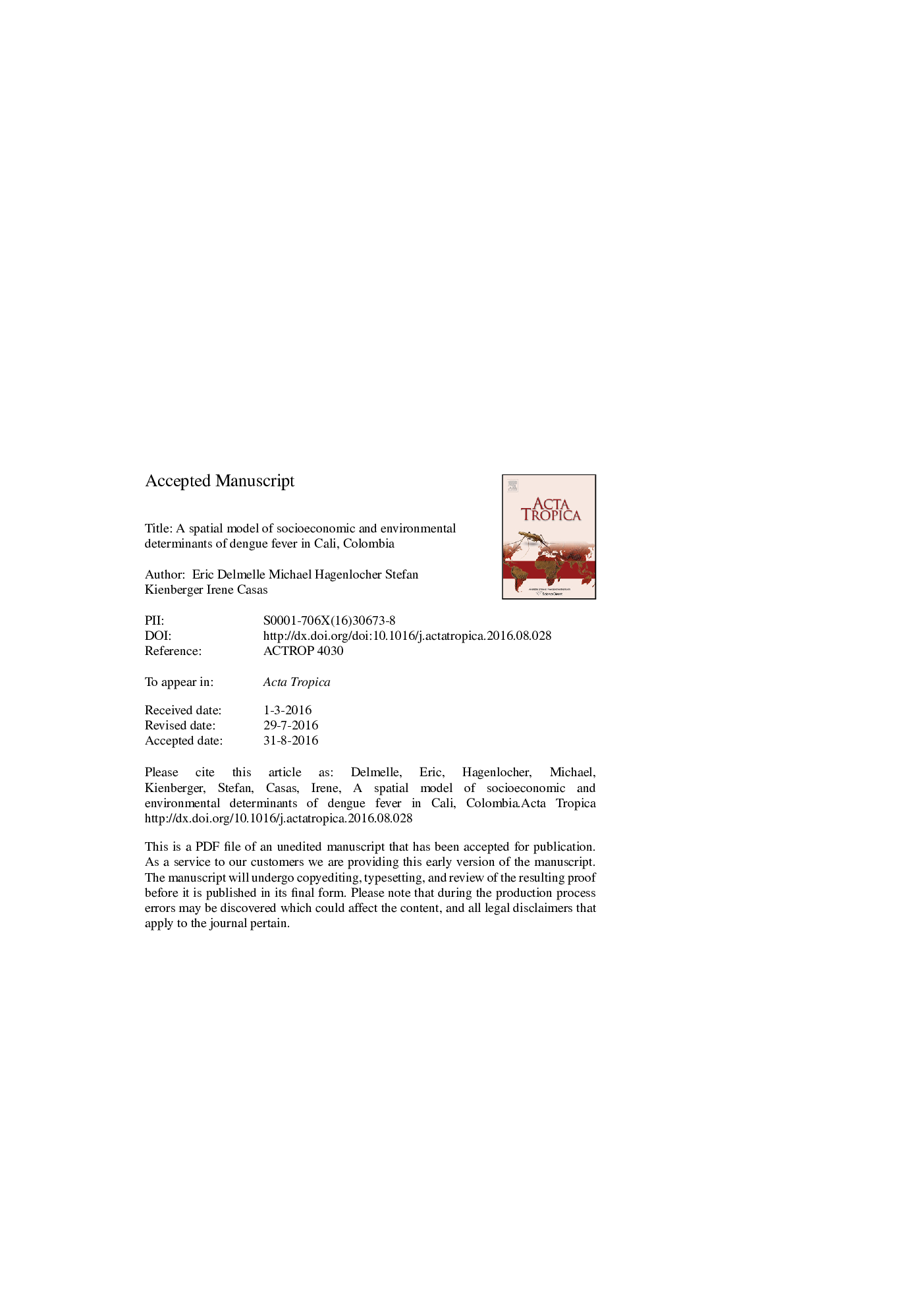| Article ID | Journal | Published Year | Pages | File Type |
|---|---|---|---|---|
| 6126319 | Acta Tropica | 2016 | 24 Pages |
Abstract
Dengue fever has gradually re-emerged across the global South, particularly affecting urban areas of the tropics and sub-tropics. The dynamics of dengue fever transmission are sensitive to changes in environmental conditions, as well as local demographic and socioeconomic factors. In 2010, the municipality of Cali, Colombia, experienced one of its worst outbreaks, however the outbreak was not spatially homogeneous across the city. In this paper, we evaluate the role of socioeconomic and environmental factors associated with this outbreak at the neighborhood level, using a Geographically Weighted Regression model. Key socioeconomic factors include population density and socioeconomic stratum, whereas environmental factors are proximity to both tire shops and plant nurseries and the presence of a sewage system (R2Â =Â 0.64). The strength of the association between these factors and the incidence of dengue fever is spatially heterogeneous at the neighborhood level. The findings provide evidence to support public health strategies in allocating resources locally, which will enable a better detection of high risk areas, a reduction of the risk of infection and to strengthen the resilience of the population.
Related Topics
Life Sciences
Immunology and Microbiology
Parasitology
Authors
Eric Delmelle, Michael Hagenlocher, Stefan Kienberger, Irene Casas,
